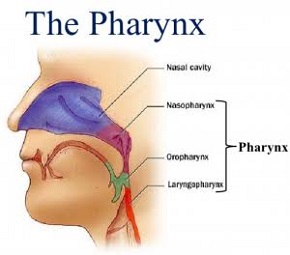Digestion and Absorption - Online Test
Q1. The teeth occur in human beings are
Answer : Option A
Explaination / Solution:
Each tooth is embedded in a socket of jaw bone called thecodont. Human being forms two sets of teeth during their life temporary milk or deciduous teeth replaced by a set of permanent or adult teeth called diphyodont. An adult human has 32 permanent teeth which are of four different types called heterodont.
Q2.
Complete the following reaction :
- Maltose — Maltase → Glucose + i
- Lactose — Lactase → Glucose + ii
- Sucrose — Sucrase → Glucose + iii
Answer : Option D
Explaination / Solution:
Maltose in presence of maltase produce two molecules of glucose. Lactose in presence of lactase produce glucose and galactose. Sucrose in presence of sucrose produce glucose and fructose.
Q3. Which of the following is not a part of colon?
Answer : Option A
Explaination / Solution:
The colon is divided into three parts – an ascending, a transverse and a descending part.
Q4. Brunner’s gland is
Answer : Option B
Explaination / Solution:
Brunner’s glands are submucosal mucin secreting glands localized predominantly in the duodenal bulb and proximal duodenum, decreasing progressively in size and number in the distal portions.
Sub-mucosal glands (Brunner’s glands) provide alkaline medium.
Q5.
Match the cells and their secretions:
| Cell Type | Secretion |
| a) Goblet cell | i) succusentericus |
| b) Oxyntic cells | ii) mucus |
| c) Chief cells | iii) acid |
| d) Intestinal gland cells | iv) pepsinogen |
Answer : Option B
Explaination / Solution:
The intestinal mucosal epithelium has goblet cells which secrete mucus. The secretions of the brush border cells of the mucosa along with the secretions of the goblet cells constitute the intestinal juice or succusentericus. The peptic or chief cells which secrete the proenzyme pepsinogen. The parietal or oxyntic cells secrete HCl acid.
Q6. The part which is common passage for both digestive and respiratory tracts :
Answer : Option A
Explaination / Solution:
In humans the pharynx is part of the digestive system and also of the conducting zone of the respiratory system. The oesophagus and the trachea (wind pipe) open into the pharynx.

Q7. All are digestive glands except :
Answer : Option B
Explaination / Solution:
The thyroid is part of the endocrine system, which is made up of glands that produce, store, and release hormones into the bloodstream so the hormones can reach the body's cells.
The thyroid gland uses iodine from the foods you eat to make two main hormones:
Triiodothyronine (T3) Thyroxine (T4)
Q8. _____ from pharynx is conveyed into oesophagus by _____ .
Answer : Option A
Explaination / Solution:
The bolus is then conveyed into the pharynx and then into the oesophagus by swallowing or deglutition.
Q9. The bile duct and the pancreatic duct open together into the duodenum as
Answer : Option A
Explaination / Solution:
The bile duct and the pancreatic duct open together into the duodenum as the common hepato-pancreatic duct which is guarded by a sphincter called the sphincter of Oddi.
[Add mage here]
Q10. Digestion can be defined as :
Answer : Option C
Explaination / Solution:
Digestion is the breakdown of large insoluble food molecules into small water-soluble food molecules so that they can be absorbed into the watery blood plasma.
In certain organisms, these smaller substances are absorbed through the small intestine into the blood stream.
